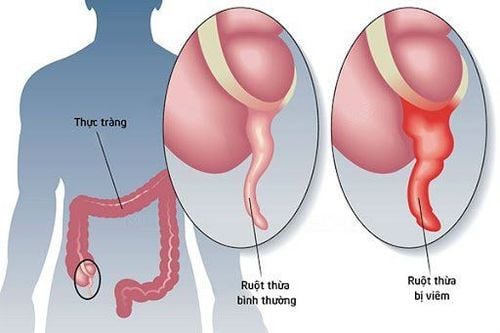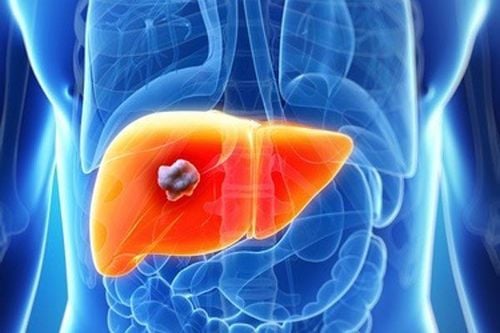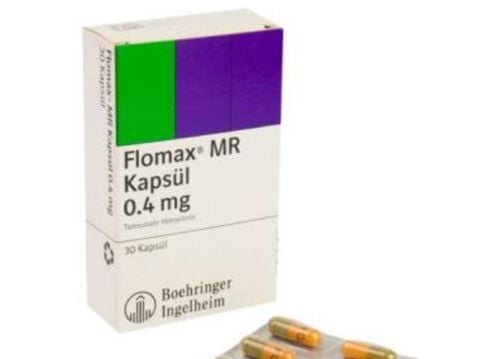This is an automatically translated article.
Article written by BSCKI Dong Xuan Ha - Department of Medical Examination and Internal Medicine - Vinmec Ha Long International General HospitalAppendicitis pain is a warning sign that the appendix is having problems, most commonly appendicitis. If not detected and treated promptly, the patient's appendix can rupture, which is life-threatening. Thus, recognizing which side of the appendix hurts is the first thing that determines the effectiveness of treatment.
1. What is appendicitis?
In the body, the appendix is a pocket-shaped organ, as small as a thumb, located on the lower right side of the abdomen. The appendix has one end that is sealed off, and the other end is connected to the cecum (first part of the large intestine). When a blockage occurs inside the appendix, waste products reach the large intestine gradually accumulate, creating conditions for bacteria to grow, causing inflammation and infection. The result is appendicitis , the typical symptom of which is appendicitis pain .Appendicitis is not a rare disease that can occur in anyone regardless of age. This is a dangerous disease for the body, affecting almost all activities of daily living. However, signs of this disease are often not obvious, especially in the early stages of the disease. Therefore, recognizing which side of the appendix is painful is important in detecting the disease early, so that it can be treated effectively.
Trắc nghiệm: Bạn biết gì về ruột thừa của mình
Ruột thừa có phải là một bộ phận “thừa” của cơ thể và không có bất kỳ chức năng nào? Tại sao có người lại bị viêm ruột thừa? Hãy cùng làm thử trắc nghiệm dưới đây để hiểu thêm về ruột thừa của mình nhé.
Bài dịch từ: webmd.com
2. Signs to recognize which side of the appendix hurts
There are many types of appendicitis, the typical form is found in the vast majority of cases when the appendix is in the correct position. Here are 6 signs to identify which side of the appendix hurts.2.1. Stomachache
2.1.1. Some other forms on the right (right iliac fossa) typical form
Often random pain, may start from different locations in the abdomen, 1 to 3 hours later localized to the right iliac fossa. Dull, constant, increasing pain. The severity of appendicitis usually increases within 24 hours.

2.1.2. Some other bodies
Posterior appendicitis: Pain in the right lumbar region, possibly radiating to the right hip and thigh due to irritation of the sciatic nerve. Appendicitis in some other locations: When appendicitis, all daily activities of the patient are disrupted, because even small movements affecting the abdomen can cause pain. intense, eg walking, sneezing, lifting things. Thus, in this case, the patient should be taken to the hospital immediately for early diagnosis and treatment by a gastroenterologist to limit complications.
Note: Appendicitis is a surgical emergency, if detected early, the treatment is relatively easy. Leaving it late will have many complications that can be life-threatening. Be alert and go to the nearest medical facility as soon as possible with dull, constant, increasing abdominal pain especially localized in the right lower abdomen.
2.2. Frequent urination
Frequent urination and bladder pain are also one of the warning signs that appendicitis is progressing seriously. This condition is caused by inflammation and infection from the appendix, which affects the body's normal excretory process. This condition can be long-lasting and dangerous if not treated promptly.
Frequent urination and bladder pain are also one of the warning signs that appendicitis is progressing seriously
2.3. Stomach rumbling with prolonged vomiting
Prolonged vomiting, abdominal pain, diarrhea, gnawing, discomfort, ... are manifestations of digestive disorders, including appendicitis. Patients in addition to suffering right appendicitis pain, also have to face consequences from the digestive system such as weakness, weakness, paleness.2.4. Trembling and fever
Patients with appendicitis often have a mild fever, usually from 38 to 38.5 degrees Celsius, in addition to shaking, chills. Caused by inflammation and infection in the body, the body must respond to inflammation, causing local or systemic pain sensations, such as fever and tremors.2.5. Anorexia
People who are having digestive problems often do not want to add anything to the body, even though they still know that the body needs to be supplied with energy to maintain life. Especially for appendicitis, the pain and obsession caused by prolonged vomiting make the patient feel afraid to eat or drink anything.2.6. Rigid abdominal wall
Besides pain in the lower right abdomen, abdominal cramping is also one of the signs of appendicitis. According to experts at Vinmec, left or right appendicitis pain is often confused with stomach pain. Therefore, to be able to accurately diagnose whether the condition is appendicitis or not, the patient needs to perform one or more tests including: pathology, urinalysis, abdominal X-ray. and chest, CT scan if confused with other diseases,...However, if you notice pain in the abdomen lasting for hours, accompanied by fever, vomiting, or diarrhea,... then the patient should be transported to the hospital immediately for an accurate examination, to avoid the condition worsening due to late detection.

3. How to treat appendicitis?
After the diagnosis is confirmed, the doctor will examine, consider and advise on the treatment of appendicitis for the patient.Among them, appendectomy is the most common and almost the only method. This is because appendicitis is a condition that is classified as an emergency, requiring surgery as soon as possible to avoid dangerous complications.
Currently, the laparoscopic appendectomy method is often chosen due to its aesthetics and faster postoperative recovery compared to conventional surgery.
After surgery, patients will be prescribed rehydration, body support, pain relievers and antibiotics to help fight inflammation and infection. Surgery to remove the appendix is the most common and almost the only method. When going home, the patient should note the following symptoms and notify the doctor for timely resolution:
Uncontrollable vomiting. Appendicitis pain worsens. Dizziness, dizziness, not awake. Urinating or vomiting blood. The incision is painful, pus appears, and swollen. Unusual fever. Appendicitis is a symptom of an abnormal condition of the appendix. Appendicitis pain has a very diverse nature, so it is difficult to recognize and diagnose accurately. However, due to the acuteness of the diseases that cause appendicitis, it is necessary to immediately bring the patient to the medical center for examination and diagnosis when it is suspected that the patient is showing signs of appendicitis. .
Vinmec International General Hospital is applying laparoscopic appendectomy to successfully treat thousands of cases of appendicitis. With outstanding advantages in facilities and modern machinery system, Vinmec is increasingly appreciated not only in laparoscopic appendectomy but also in many other techniques.
The medical team performing the surgery are highly qualified and experienced, ready to handle even when unexpected complications occur. After surgery, the patient will be cared for and closely monitored, rested in a high-quality, international-standard ward, providing maximum support for the recovery process.
Please dial HOTLINE for more information or register for an appointment HERE. Download MyVinmec app to make appointments faster and to manage your bookings easily.














